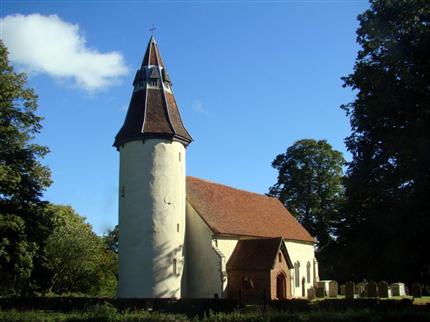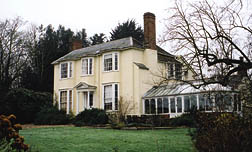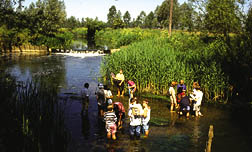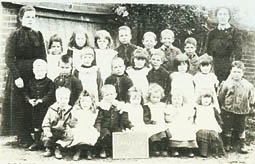
|
The Parish of Lamarsh The name Lamarsh is Anglo-Saxon (with the accent on the first syllable) and not, as many people believe, French. Early records show the spelling Lamers and Lamersch. This means Lam is a forerunner of the word loam and Erse means stubble land, a good description of the light arable land in much of the parish. Domesday Book, 1086, tells us that Lamers was owned by Ranulf Peverel, but administered by Turold on his behalf. One entry states that there is woodland for 70 pigs, there are 13 acres of meadow, there are 7 horses, 5 colts, 10 cows, 8 calves, 20 sheep, 54 pigs, 60 goats, 6 hives of bees. It is worth £6. There are probably a similar number of these animals (with the exception of goats) in the parish today, and as for values..! |
 Daws Hall (Photo Major Iain Grahame)
|
| The Parish of Lamarsh consists of 934 acres of land but was larger until 1884, as it then included 200 acres covering Fishpits and Polstead's farms to the South which, together with Lamarsh Park, a wooded deer park, were surrendered to Bures Hamlet, as were a further 113 acres enclosed within the bounds of Alphamstone parish. The population was much higher than it is now throughout the 18th and 19th centuries, comprising 404 souls in the 1841 census. This number had reduced to 186 in 1891 (on the smaller acreage) and stood at 172 in December 2002 (158 on the 2000 electoral register). |  Lamarsh village pump (Photo Barry Meekums) |
| Lamarsh Hall and Daws Hall are the main houses in the parish. Others worthy of note include The Old Rectory, designed by an assistant of Lutyens, in 1909 and extended by Quinlan Terry FRIBA in 1985, and Shrubs Farm, originally constructed in 1843 but substantially altered and extended by Raymond Erith RA in 1972, and by Ronald Geary Associates in 1988. Orchard House, formerly Street Farm and the home of the Messent family, is a fine example of a medieval hall house. Of the 60 or so properties in the parish, 22 are listed, mostly Grade II, a remarkably high proportion for a tiny village, but which underscores its antiquity and its attractions. |  Daws Hall wildlife reserve (Photo Daws Hall Field Centre) |
| Daws Hall, a Tudor building with Georgian additions, stands at the North end of the village. The land, which extends down to the River Stour and includes a well-equipped Field Centre, a two km nature trail, many species of waterfowl and an interesting collection of trees and shrubs, forms part of a charitable trust set up in 1988. Over 3000 schoolchildren from Essex and Suffolk avail themselves of these facilities each year and, on a few selected days, the grounds are open to the public.
The railway line, originally from Colchester to Cambridge, but now from Marks Tey to Sudbury, was built in 1848 and during its construction the head and tusks of a mammoth were discovered in Lamarsh. The weir on the River Stour was built to replace Pitmire Lock the foundations of which, together with a lock-keeper's house, can still be seen below the wildlife reserve at Daws Hall. |
 Lamarsh school, class of 1903. Shown outside what is now > Lamarsh Village Hall |
|
The public house, now called the Lamarsh Lion, which overlooks the Stour valley, was originally a boar lodge called Brownings. It became an Inn in 1305, with a small grocery store in a back room for many years until the early 1970's. The adjacent barn, not converted to three en-suite rooms, dates from 1535. In 1996 The Lamarsh Lion, which has a restaurant as well as a bar, was voted one of only two pubs in Essex to be included in the John Timson BBC publication The 100 best pubs in England, Scotland and Wales. There have been no shops in the village for many years, although the garage next to the house known now as Reynolds was once a village store; a blacksmith's forge stood near the crossroads opposite the village pump and there was a shop on the brook side of Chapel Cottage. This cottage has a building in the garden which is on the site of a Baptist chapel, pulled down in 1975. The adjacent property, Brook House, dating from before 1600, was once a brewhouse and beersellers. |
|
Web site hosted by Web Management UK